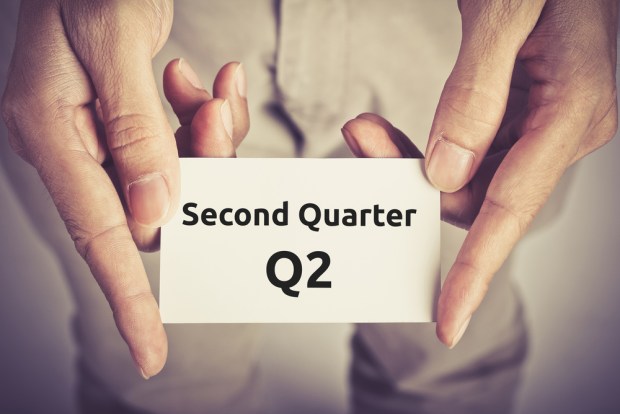What’s Next For Google And Facebook?

It’s simplistic, misleading and oh-so-very-macho to depict Google and Facebook as two titans that stepped into the ring this week, with one of those companies (you know which one) suffering a bloody defeat, in large part because of the scoring of investors (sorry, boxing judges).
People often think in clichés. With both companies now moving past their Q2 financials into the second half of 2018 and its promise of holiday-season revenue, let’s acknowledge the obvious metaphor and get into the compare-and-contrast with hopes of figuring out what’s coming from both firms in the near- and medium-term.
Mobile Ads
First off, let’s get this out of the way: No matter what happened with a certain company’s stock price this week — Facebook’s stock on Thursday afternoon (July 26) seemed to be holding steady, if still down, after Wednesday’s plunge of up to 24 percent — or where the numbers lie now, the two companies essentially own digital advertising.
Excluding China, Google and Facebook took in 84 percent of global spending on digital advertising in 2017, according to one estimate, which said that spending will increase 4.3 percent in 2018, reaching $23 billion. Google commands 35 percent of the mobile advertising market, with Facebook at 25 percent, according to a recent eMarketer report.
The Q2 earnings releases from Google and Facebook give little reason to think that dominance will end. Mobile and automated ads accounted for most of the 24 percent year-over-year increase in Google parent company Alphabet’s Q2 ad revenue, according to Chief Financial Officer Ruth Porat. For Google, that is most of its ad revenue, along with most of its ad revenue growth, but specific figures were not available. For Facebook, that is 91 percent of ad revenue, up from 87 percent last quarter.
The increase in traffic acquisition costs (TAC) for Alphabet also point to a future governed even more by mobile.
Alphabet’s TAC of $6.4 billion in the second quarter represented 23 percent of the company’s ad revenue. That’s up from 22 percent from the first quarter of 2018, and will keep increasing.
“We do expect the site’s TAC rate to continue to increase year on year, reflecting ongoing strength in mobile search, albeit at a more moderate pace relative to the year-on-year increases experienced over the past several quarters,” Porat said.
Facebook COO, Sheryl Sandberg told analysts that mobile ad revenue increased 50 percent year over year, reaching $11.9 billion, fueled by video ads.
“We’re seeing healthy growth in video ads among all advertiser segments,” said Sheryl Sandberg, Facebook‘s chief operating officer.
Privacy And Security
That future, for both companies, will certainly involve more consequences related to privacy and data security. With its Q2 earnings, Facebook offers perhaps the best example yet of what digital companies face.
The social media platform lost 1 million monthly active users from Europe as a result of the EU’s recently enacted General Data Protection Regulation (GDPR), according to CEO Mark Zuckerberg. But it’s not only stricter regulations regarding online privacy and consumer data that have digital firms concerned.
Facebook, still operating in the aftermath of the Cambridge Analytica scandal, provides yet another example: the cost for a company as it attempts to deal with the fallout of a major scandal, while trying to show that it can get ahead of the game.
Facebook’s revenue growth will slow in coming quarters and its spending will increase, in large part because of online security concerns. The company’s expenses will grow 50 percent to 60 percent compared with last year, thanks to security investments, and along with marketing and content acquisition efforts, according to CFO David Wehner. Revenue growth rates, meanwhile, will decline by “high single-digit percentages from prior quarters, sequentially in both Q3 and Q4,” he said.
“The magnitude of the slowing growth appeared to shock investors,” one report said this week, “who repeatedly asked about it on the company’s earnings call.”
That said, some analysts are coming to understand the larger scope of this focus on security and privacy. Morningstar analyst Ali Mogharabi told Reuters this week that “when it comes to much slower revenue growth, they’re talking about currency headwinds, but more, we think it’s due to slower user growth given GDPR and more focus on privacy.”
Facebook may think so too, seemingly now to rely more heavily on its apps — including Instagram, WhatsApp and IGTV — in the coming years. That’s what observers were saying after Zuckerberg, during Wednesday’s post-earnings conference call, mentioned a new metric when he said that 2.5 billion people around the world use the company’s apps. Still, it is hard to see apps producing the piles of revenue that comes from advertising, should advertising falter.
Facebook Stagnation?
All this comes amid what seems to be increasing concerns that Facebook is stagnating. Daily users in North America, for instance, remained flat, and even that number — like revenue and growth in the global daily active user base — missed analysts’ targets, with about 185 million reported for Q2 against an expectation of 185.4 million.
Google, meanwhile, came out of the Q2 earnings season in a much different position, despite being hit with the $5.1 billion fine from the European Commission over Android. That fine, of course, mattered less to investors than the fact that Alphabet beat analyst expectations for its main targets — something that Facebook failed to do, at least this quarter.
